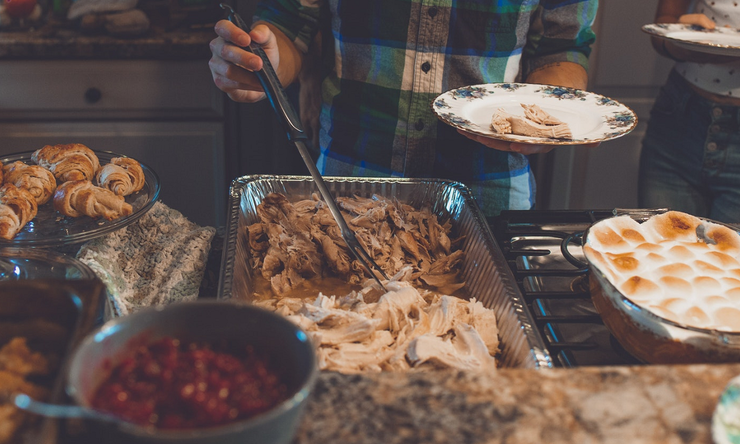Serve up nutrition this Thanksgiving
Thanksgiving is a holiday filled with memories and indulgence. Although many look forward to the decadent meal, it is important to maintain a healthy balance to avoid overeating. Registered dietitians with Baylor College of Medicine give tips on how to stay healthy during the holidays.
Pick your mealtime wisely
Everyone chooses to eat their Thanksgiving meal at different times of the day but a good practice is to give yourself time to be awake and get some physical activity in during the day before your meal. Having a few hours between your last or largest meal and the time you go to bed is a benefit as well. To avoid gastric reflux and abdominal discomfort, avoid laying down too quickly after your meal.
One suggestion is to eat your Thanksgiving meal in the afternoon or early evening. Maintain your typical meal times beforehand. If your holiday meal is in between mealtimes, consider making the previous meal more of a snack. You don’t want to be overly hungry when you sit down for your Thanksgiving meal and overeat.
Add healthy options and substitutions
Consider adding healthier options to the meal with appetizers and sides. Enjoy fresh fruit or a vegetable tray with hummus or tzatziki, or cocktail shrimp, which is low-calorie and a good source of protein. Provide healthier alternatives to traditional side dishes, such as sautéed green beans with shallots as an alternative to the traditional green bean casserole or baked sweet potatoes instead of a sugary sweet potato casserole. Traditional gravy often is high in calories, fat and sodium. To lighten up this menu staple, use a reduced sodium poultry stock as a base and include dry herbs, such as sage and thyme, to increase the flavor.
Substitutions in dessert ingredients also can be made with baking. Instead of baking with oil, substitute apple sauce. Different fruits, such as puréed beets in a chocolate dessert, can take the place of eggs and oil in dessert, which will make the treat less calorie-dense.
Smart portions
The plate method is effective to use, even during the holidays. Half of the plate should consist of non-starchy vegetables. One-quarter should contain protein and another quarter starch. Because this meal is an occasional treat, you also can enjoy a dinner roll on the side.
Alcohol is typically consumed more liberally during the holidays, but be aware that this can lead you to consume more calories. It is very easy to overpour in large wine glasses. Try declining tableside pours, as it makes it hard to keep track of how much you are consuming. While making cocktails, choose mixers like plain seltzer, which contains fewer calories and less sugar compared to tonic water or soda. It is important to alternate alcoholic beverages with water or a “mocktail” or some type of nonalcoholic beverage – something that guests feel comfortable drinking without refilling with wine or cocktails constantly.
Leftover safety
Moderating your Thanksgiving meal allows for you to enjoy leftovers for a few days, but make sure to not keep them for too long after the holiday. Leftovers should be consumed within three to four days of preparation. Make sure you cool cooked food quickly and do not let it linger on the counter, as foods should not sit at room temperature for more than two hours. Do not feel pressured to finish off foods that keep well in the freezer for up to six months, such as meat or a non-cream based casserole. Freeze extra portions and enjoy them in the New Year.
Although you should be mindful of eating habits on Thanksgiving Day, it is reasonable to eat certain foods in moderation during this yearly event. Baylor registered dietitians say these rich, delicious foods have emotional ties, and we have to know those foods have a place around our holiday traditions. It adds to our culture and sense of family, so enjoy these occasional indulgences.











